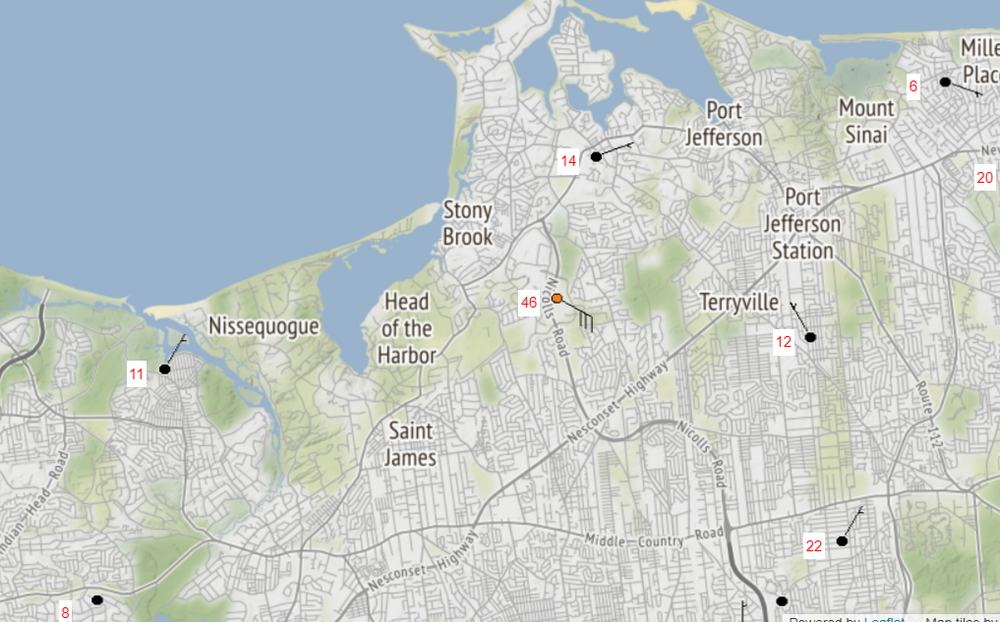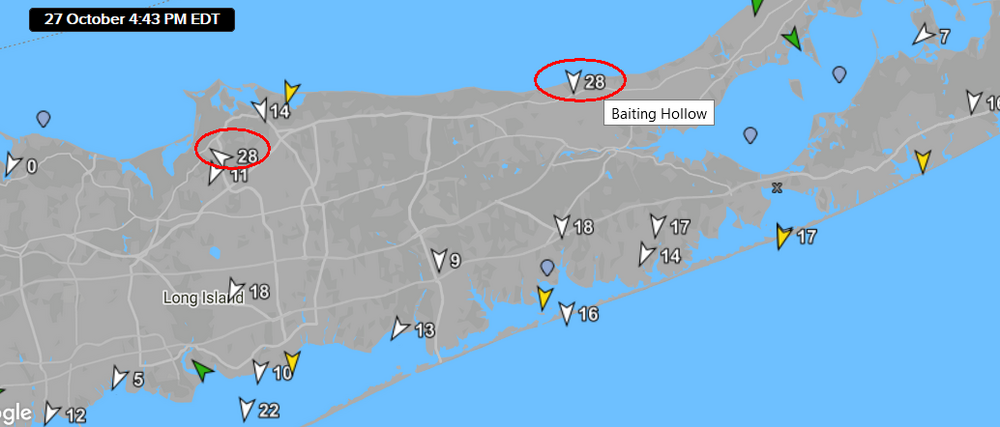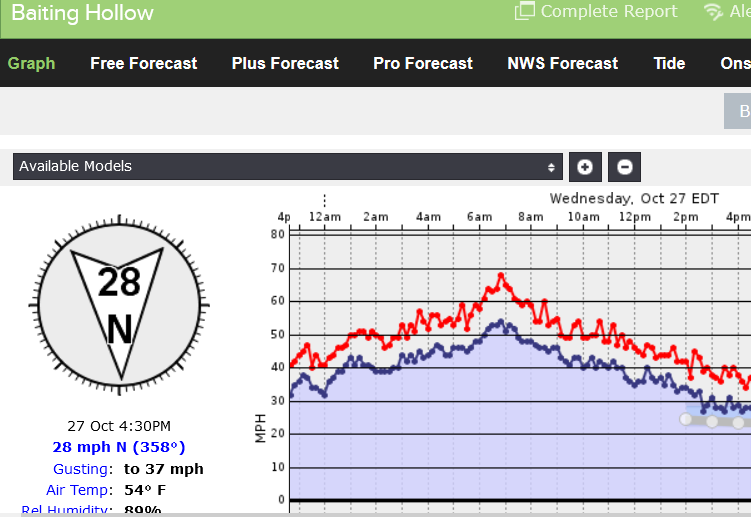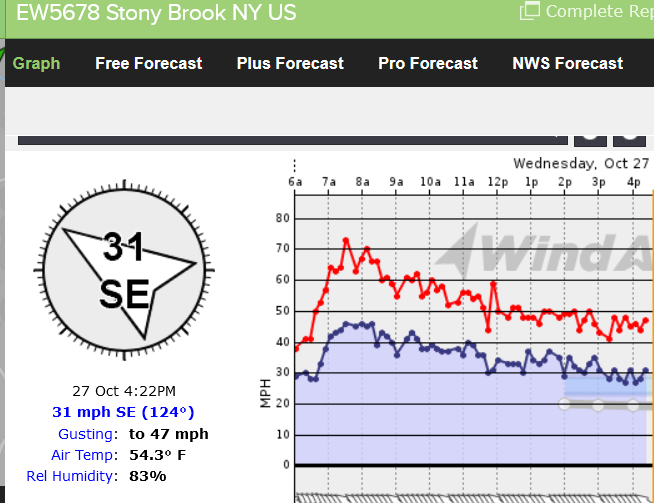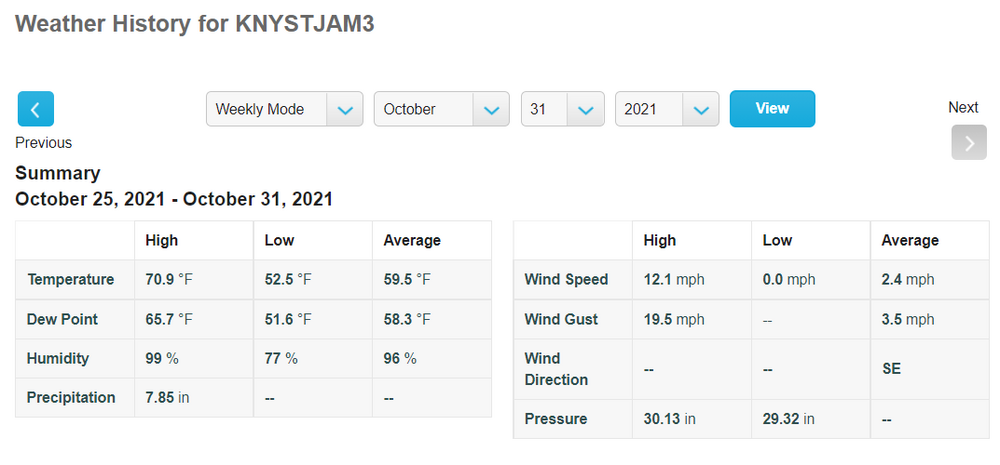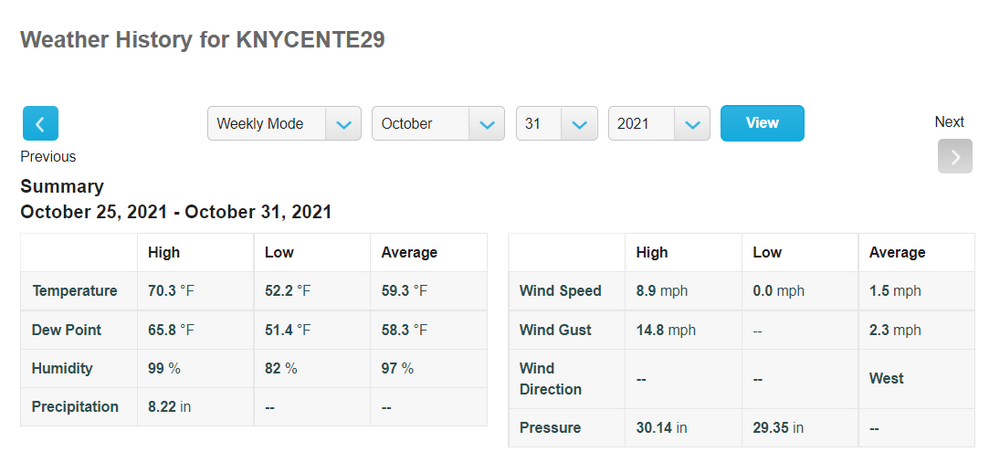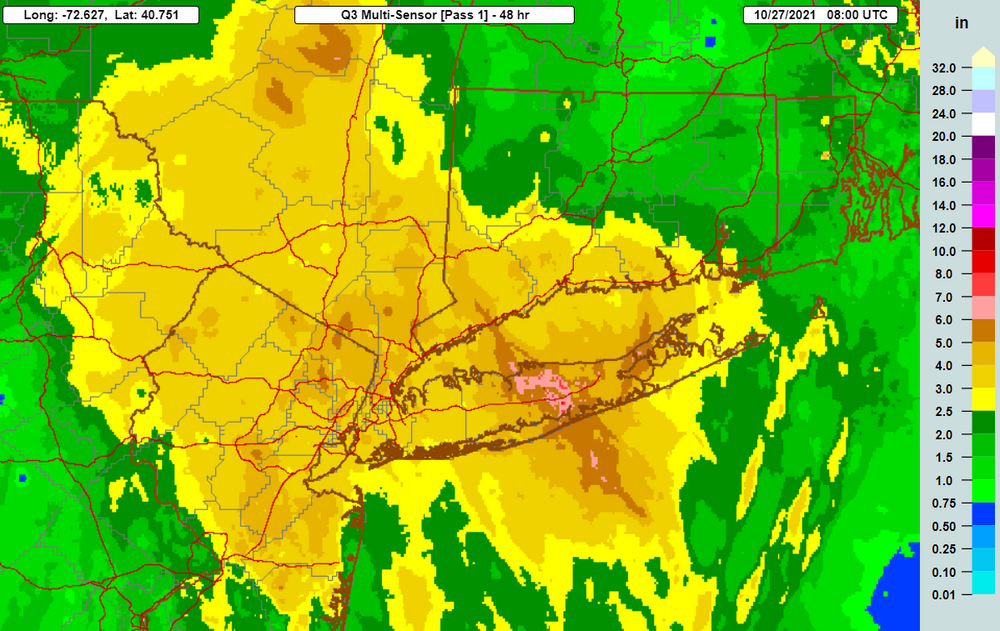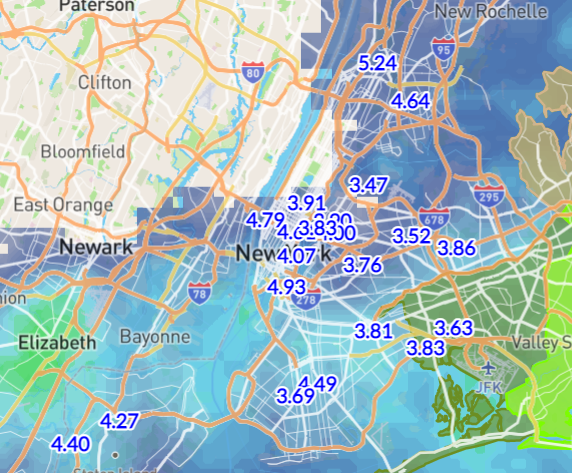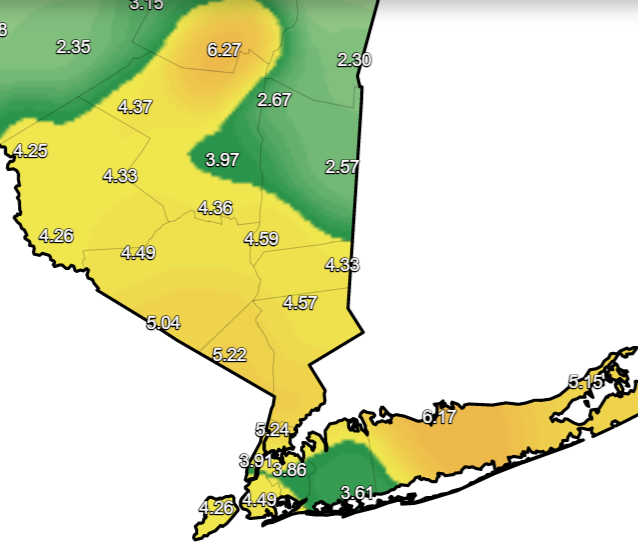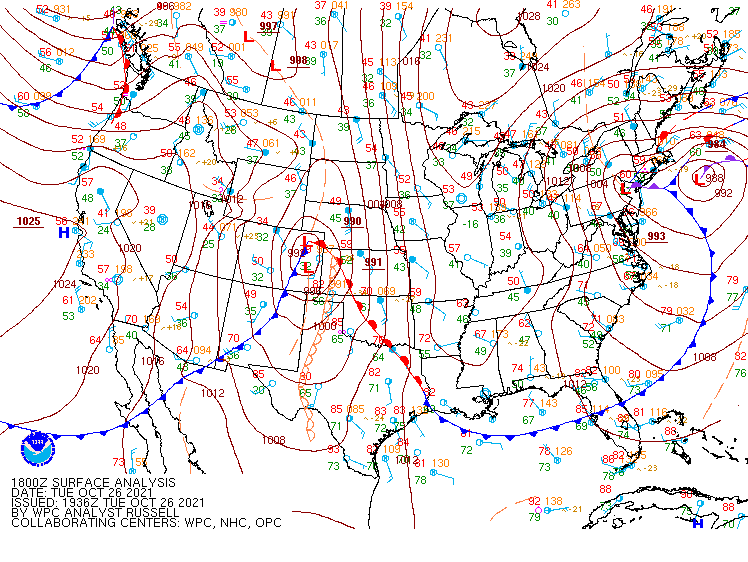-
Posts
976 -
Joined
-
Last visited
Content Type
Profiles
Blogs
Forums
American Weather
Media Demo
Store
Gallery
Everything posted by jconsor
-

2021 Atlantic Hurricane season
jconsor replied to StormchaserChuck!'s topic in Tropical Headquarters
Thread on #94L which is gaining convection and will likely be named soon as a subtropical storm. It could briefly complete transition to tropical in the next day or two, before shear increases. Wouldn't rule out the possibility it becomes a strong STS or hurricane by mid next week as shear decreases again, but first it has to weather the rapid ramp-up in shear over the weekend. -

2021 Atlantic Hurricane season
jconsor replied to StormchaserChuck!'s topic in Tropical Headquarters
Outside chance for a brief tropical depression or low-end TS in the eastern Atlantic this weekend into early next week. Would likely be unprecedented per climo so late east of 40W (I couldn't find any TS+ in NHC best track back to late 1800s, but it doesn't include TDs). The fact that we even have a *potential* system to discuss in the eastern MDR so late is nothing short of remarkable. Likely the lingering Atlantic Nino is playing a role, with ITCZ tugged south of usual, allowing waves to stay over more favorable SSTs/upper level winds than is typical for this time of year. -

OBS and nowcast 9PM tonight-8A Wednesday for a general 2-5" rain, isolated 8" possible. 40-60 kt damaging wind likely Tuesday-early Wednesday. Focus for damaging wind and heaviest rain is the I95 corridor to the coasts. Power outages esp CT LI.
jconsor replied to wdrag's topic in New York City Metro
FYI I do not consider the 60-70 mph gusts reported at Baiting Hollow and Stony Brook out in central Suffolk County, LI to be representative. The Stony Brook site anemometer is ~70 feet above ground. I believe Baiting Hollow is on a ~75 foot bluff right on LI Sound. In my experience, both stations tend to run >25% higher than any nearby stations in past events. Compare current sustained winds at both sites to surrounding sites - generally 2x the land stations, even those right along the coast.- 228 replies
-
- 1
-

-
- heavy rain
- flash flooding
-
(and 2 more)
Tagged with:
-

2021 Atlantic Hurricane season
jconsor replied to StormchaserChuck!'s topic in Tropical Headquarters
In addition to the potential subtropical system evolving as the E coast storm shifts eastward into the central Atlantic, we have a tightly-wound low south of Italy that has subtropical characteristics. It already has produced devastating flooding in Sicily yesterday. Facing lots of shear now, but that should weaken Thu into this weekend when this system has a decent chance of becoming fully tropical. These "Medicane" systems appear to becoming more common vs. the 1970s to early 1990s, especially the more intense ones that produce hurricane force winds. Medicane Ianos in Sep 2019 dropped to 984 mb and reached peak intensity 100 mph (!) sustained winds in the coastal waters near sw Greece just before making landfall, according to a recent paper: https://journals.ametsoc.org/view/journals/bams/aop/BAMS-D-20-0274.1/BAMS-D-20-0274.1.xml?tab_body=fulltext-display. Another weaker one in early in Oct 2019 tracked unusually far east through the Mediterranean and reached Israel and Egypt with gusty winds and heavy rainfall. -

OBS and nowcast 9PM tonight-8A Wednesday for a general 2-5" rain, isolated 8" possible. 40-60 kt damaging wind likely Tuesday-early Wednesday. Focus for damaging wind and heaviest rain is the I95 corridor to the coasts. Power outages esp CT LI.
jconsor replied to wdrag's topic in New York City Metro
Some chase videos of the hybrid nor'easter:- 228 replies
-
- 2
-

-
- heavy rain
- flash flooding
-
(and 2 more)
Tagged with:
-

OBS and nowcast 9PM tonight-8A Wednesday for a general 2-5" rain, isolated 8" possible. 40-60 kt damaging wind likely Tuesday-early Wednesday. Focus for damaging wind and heaviest rain is the I95 corridor to the coasts. Power outages esp CT LI.
jconsor replied to wdrag's topic in New York City Metro
As @bluewave mentioned, the subtropical nature of this system meant that the strongest winds were tightly concentrated close to the center. That factor, along with this system looping quite close to se New England, helped to generate gusts across SE New England that exceeded two similarly looping storms that were a little further offshore - Blizzard of Feb 1978 and the Perfect Storm of 1991. Meanwhile, the same small radius of max winds ensured that gusts across LI, NYC and coastal CT were less than what one would typically see with a wintertime system of this intensity tracking just inside the 40/70 benchmark.- 228 replies
-
- 1
-

-
- heavy rain
- flash flooding
-
(and 2 more)
Tagged with:
-
Yes, MAREPAM is a great site to track wind impacts during se New England coastal storms. It's a mesonet with stations sited in the typically windiest/most exposed coastal locations:https://marepam.org/
-

OBS and nowcast 9PM tonight-8A Wednesday for a general 2-5" rain, isolated 8" possible. 40-60 kt damaging wind likely Tuesday-early Wednesday. Focus for damaging wind and heaviest rain is the I95 corridor to the coasts. Power outages esp CT LI.
jconsor replied to wdrag's topic in New York City Metro
Great site for monitoring wind impacts for coastal storms in SE New England including Block Island - a mesonet with stations sited in the typically windiest/most exposed coastal locations: https://marepam.org/- 228 replies
-
- 1
-

-
- heavy rain
- flash flooding
-
(and 2 more)
Tagged with:
-

OBS and nowcast 9PM tonight-8A Wednesday for a general 2-5" rain, isolated 8" possible. 40-60 kt damaging wind likely Tuesday-early Wednesday. Focus for damaging wind and heaviest rain is the I95 corridor to the coasts. Power outages esp CT LI.
jconsor replied to wdrag's topic in New York City Metro
An update on the very impressive winds in SE New England. These wind reports are comparable to some seen on the Cape in the Dec 24-25, 1995 nor'easter, with the 80+ mph reports also more widespread than the Oct 29-30, 2017 "Bomb Cyclone" (the storm that may have made that term viral haha).- 228 replies
-
- 3
-

-
- heavy rain
- flash flooding
-
(and 2 more)
Tagged with:
-
These wind reports are comparable to some seen on the Cape in the Dec 24-25, 1995 nor'easter, with the 80+ mph reports also more widespread than the Oct 29-30, 2017 "Bomb Cyclone" (the storm that may have made that term viral haha).
-

OBS and nowcast 9PM tonight-8A Wednesday for a general 2-5" rain, isolated 8" possible. 40-60 kt damaging wind likely Tuesday-early Wednesday. Focus for damaging wind and heaviest rain is the I95 corridor to the coasts. Power outages esp CT LI.
jconsor replied to wdrag's topic in New York City Metro
Here are 48 hour precipitation totals. Widespread 4"+ totals across SE NY. Heaviest amounts in NYC were in lower Manhattan and the Bronx with 4.75-5.5". Looks like the multisensor precip. estimate (which combines radar with sfc. obs) is underestimating precip. by ~15-20% based on mesonet obs. Numerous Weather Underground stations confirm what is shown on the multisensor precip. estimate - highest amounts were in the ne three-quarters of Suffolk County with widespread 5"+, locally 7-8.5" in the area around Stony Brook, Setauket, Centereach and St. James. A small area of SW CT near Westport and Fairfield also saw 6-7" totals, but these were quite localized and mainly near immediate shore. Very impressive mesoscale banding out there! Will be interested to see CoCoRAHS totals later. Thank G-d these rains fell on dry soil and rainfall rates were generally 1" per hour or less in the areas where heaviest totals fell... thus avoiding significant flooding in LI, S. CT and NYC. N/C. NJ and scattered areas in the lower Hudson Valley were a different story.- 228 replies
-
- 3
-

-
- heavy rain
- flash flooding
-
(and 2 more)
Tagged with:
-

OBS and nowcast 9PM tonight-8A Wednesday for a general 2-5" rain, isolated 8" possible. 40-60 kt damaging wind likely Tuesday-early Wednesday. Focus for damaging wind and heaviest rain is the I95 corridor to the coasts. Power outages esp CT LI.
jconsor replied to wdrag's topic in New York City Metro
NWS Upton finally pulled the trigger on a high wind warning for eastern Suffolk County on LI as well as s. New London County in se CT. Would have been better from public awareness perspective to put up a high wind watch 24+ hours ago IMHO. They mention gusts up to 65 mph for South Fork and 60 mph North Fork and se coastal CT. I think all of Suffolk County (especially near the shores) could see gusts up to ~60 mph, with perhaps locally up to 70 mph on the end of the Twin Forks.- 228 replies
-
- heavy rain
- flash flooding
-
(and 2 more)
Tagged with:
-

OBS and nowcast 9PM tonight-8A Wednesday for a general 2-5" rain, isolated 8" possible. 40-60 kt damaging wind likely Tuesday-early Wednesday. Focus for damaging wind and heaviest rain is the I95 corridor to the coasts. Power outages esp CT LI.
jconsor replied to wdrag's topic in New York City Metro
Some additional context on wind damage potential:- 228 replies
-
- 1
-

-
- heavy rain
- flash flooding
-
(and 2 more)
Tagged with:
-

OBS and nowcast 9PM tonight-8A Wednesday for a general 2-5" rain, isolated 8" possible. 40-60 kt damaging wind likely Tuesday-early Wednesday. Focus for damaging wind and heaviest rain is the I95 corridor to the coasts. Power outages esp CT LI.
jconsor replied to wdrag's topic in New York City Metro
Thread on wind damage potential.- 228 replies
-
- 3
-

-

-
- heavy rain
- flash flooding
-
(and 2 more)
Tagged with:
-

OBS and nowcast 9PM tonight-8A Wednesday for a general 2-5" rain, isolated 8" possible. 40-60 kt damaging wind likely Tuesday-early Wednesday. Focus for damaging wind and heaviest rain is the I95 corridor to the coasts. Power outages esp CT LI.
jconsor replied to wdrag's topic in New York City Metro
- 228 replies
-
- 1
-

-
- heavy rain
- flash flooding
-
(and 2 more)
Tagged with:
-

OBS and nowcast 9PM tonight-8A Wednesday for a general 2-5" rain, isolated 8" possible. 40-60 kt damaging wind likely Tuesday-early Wednesday. Focus for damaging wind and heaviest rain is the I95 corridor to the coasts. Power outages esp CT LI.
jconsor replied to wdrag's topic in New York City Metro
- 228 replies
-
- 1
-

-
- heavy rain
- flash flooding
-
(and 2 more)
Tagged with:
-

OBS and nowcast 9PM tonight-8A Wednesday for a general 2-5" rain, isolated 8" possible. 40-60 kt damaging wind likely Tuesday-early Wednesday. Focus for damaging wind and heaviest rain is the I95 corridor to the coasts. Power outages esp CT LI.
jconsor replied to wdrag's topic in New York City Metro
That's quite impressive, especially so early on in the storm. At least as of yesterday, seems most forecasters/models were not expecting rainfall rates to reach or exceed 2" per hour... as @wdragmentioned, this has the potential to be a higher-impact flooding event than currently signaled by NWS.- 228 replies
-
- 1
-

-
- heavy rain
- flash flooding
-
(and 2 more)
Tagged with:
-
For those interested in the potential tropical/subtropical transition of this storm (mainly after it impacts the NE US and moves slowly east across the western Atlantic), worth reading this summary linked below from the NWS about how a hurricane developed in the midst of the large circulation of the Perfect Storm in Oct 1991. Difference here is that the tropical cyclone that developed inside the Perfect Storm quickly moved north into Atlantic Canada and was only a TC for a little over a day (after being subtropical for 12 hours). In our case, the tropical/subtropical system could persist for many days (til at least Nov 4 based on EPS and GEFS, possibly even a few days after that) as it drifts east and remains separated from the westerlies
- 306 replies
-
- 8
-

-
- heavy rain
- damaging wind
-
(and 1 more)
Tagged with:
-

2021 Atlantic Hurricane season
jconsor replied to StormchaserChuck!'s topic in Tropical Headquarters
-

2021 Atlantic Hurricane season
jconsor replied to StormchaserChuck!'s topic in Tropical Headquarters
Long thread offering some thoughts on why the ITCZ and Caribbean activity have been suppressed up until now in Oct... Why some forecasters are convinced the season is over in the Atlantic: ...And how a significant change in the pattern is coming next two weeks that favors better chance of Caribbean activity: -

2021 Atlantic Hurricane season
jconsor replied to StormchaserChuck!'s topic in Tropical Headquarters
-

2021 Atlantic Hurricane season
jconsor replied to StormchaserChuck!'s topic in Tropical Headquarters


